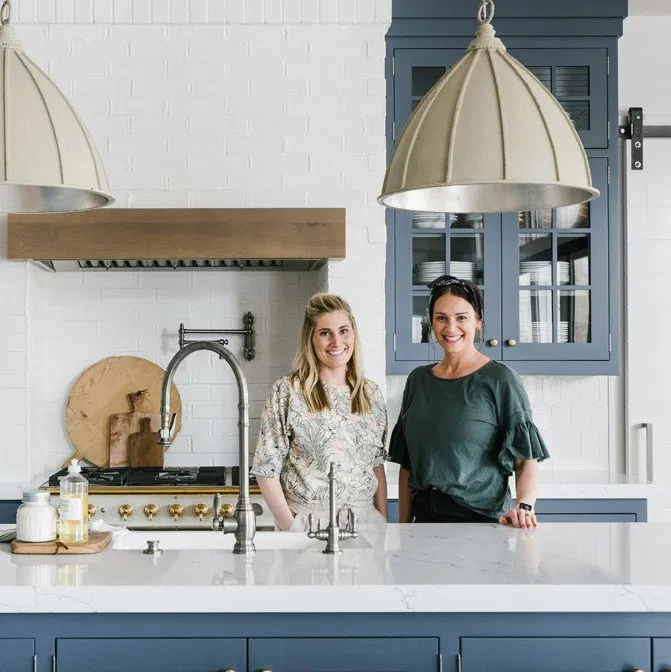The 50 States Project is a yearlong series of candid conversations with interior designers across the country about how they’ve built their businesses. This week, South Jordan, Utah–based Kirsten Krason tells us how she and House of Jade co-founder Erin Morgan launched a business that started with friendship, how they learned to build trust between clients and staff designers, and why they’ve distanced their sourcing strategy from retail.
Did you always know you wanted to be a designer?
I was going to school for interior design—I started in Arizona at a community college and then I finished my degree in Salt Lake—and I got into the blogging world as a student right as blogs were becoming a big thing. Suddenly, I had all of this exposure to people from all over the world, and [taking projects] was just kind of natural. I started doing some e-design—I had a living room in Tennessee, and this small project in Paris, which was super exciting. It was kind of all over the place, but it gave me a lot of exposure. I was still in school at first, taking it a little bit at a time. But then because I got in so early at the beginning of social media, it was a very good leg up on getting clients and getting the word out.
At first, my business was just Kirsten Krason Interiors. In 2013, I joined with a business partner, who’s one of my best friends, and we came up with House of Jade—with a new name, a new blog, a new website, our own Instagram account, all of that. But I had already formed this clientele and following, so I don’t think we ever felt like we were hurting for clients. They were always just there, which was a huge advantage.
How did your best friend become your business partner?
We were both young mothers—when we started, we both had babies, and we were looking for a creative outlet that also made us feel like we were progressing and doing things that matter to people. We started because we had a friend who needed some help. I had my own design business, and Erin had always been involved as my seamstress, so we were used to working together. But then we did a couple projects together where she was more in the designer role, and it went really well. I was also super burned-out at that time, and having someone to come in and alleviate some of the load made it a lot more fun.
Going back for a second, what did e-design look like in the early days? What were you sending clients, and how much were you charging?
I was charging $40 an hour, which to me at the time was so much money. And I had no experience. I probably should’ve charged $15 an hour, or maybe I should’ve just done it for free. I definitely was not very qualified. But everybody back then was just—it was like this reawakening for design, because people had access to so much design through blogs and new shelter magazines that they didn’t have before, and they were really invigorated by it. A lot of people used to think, Oh, I can only hire a designer if I have this huge mansion. But e-design opened up this world where the everyday person was able to have access to a designer.
Were you sending a shopping list then?
Yeah. I would send a shopping list and a design board that I made in Keynote. I wasn’t doing much AutoCAD back then, so these weren’t professional floor plans—it was a lot more decorating. I was sourcing pillows and furniture and art and paint colors. I wasn’t doing kitchen remodels or anything. Now, we do. But back then, it was just a lot of decorating, which was very easy to do virtually. And I loved it. I had a lot of fun. I would put my son down for a nap and spend three hours immersed in somebody’s project. I’d send it off two weeks later, and then I would share it on my blog. It was a really amazing experience because it really was a win-win. I felt like I was offering someone a service that they could afford and making their home better, but it was giving me something to do and a little extra money.
When did you transition to in-person, full-service design?
When Erin got involved, it became a lot easier for me to handle more. We started out doing playrooms, nurseries, bedrooms and living rooms. And then we got a couple small kitchen projects, or we’d remodel a fireplace. We were just barely dipping our feet into the world of remodeling when we did a Parade home. The Utah [Parade of Homes showcases] are really big out here, and it gave us a lot of good exposure for our first-ever new build. After that, we started doing a lot more. We also hired our first employee, which was huge for us because she was really proficient in CAD, which made all of the renderings and floor plans a lot more professional than they were when I was trying to do them, and which got us a much better clientele.

How long was it just the two of you? And when did you look at each other and say, “We’ve got to hire somebody”?
For the longest time, Erin and I were doing every little thing. I remember we did this little girl’s room, and Erin had sewn all the window treatments and pillows the night before—she was up until two o’clock in the morning—and then we did this install. And we were doing our own accounting, so I’m on the floor of the client’s kitchen trying to plug in all the numbers for how much everything costs so she can cut us a check. It was just crazy. It was fine when it was just one or two projects, but when we started to get busy, we just couldn’t keep up with it. Erin didn’t want to be a seamstress; she wanted to be a designer. And I didn’t want to be an accountant—I wanted to be a designer too. So we started looking elsewhere [for those services].
We brought on a 1099 accountant to help us with some of our bookkeeping, and then we had an intern who we ended up hiring as our assistant. She did so many things for us, which was amazing. Those two people lasted us a good while. It was just the three of us—Erin, the assistant and me, plus the freelance accountant—and then we would have interns come through, but they’d come and they’d go. Eventually, we hired a few more designers, and that’s when it started to feel a lot more real.
When you made that first hire, what kind of math did you do to justify the decision? It often feels like a big risk.
It was a big risk. I don’t know if we even did the math that we should have done. I think we were just like, “We need this.” The nice thing is that if you hire anybody who can bring in billable time, it just makes sense. As long as what she was doing was mostly billable, we were making money, so we kept an eye on that. And at that time, we didn’t have an office—we were working from home, so there wasn’t a lot of overhead, and we didn’t actually need to be making that much money. With that first hire, it was more about making sure it was still fun and that we were still liking it—that was our main focus at that time.
How big is your team today?
We have 23 employees now.
Wow. How do you go from three to 23?
We brought on a third business partner about a year and a half ago, and that’s when we started hiring a lot more. We had opened up an e-commerce store, so we needed a lot more help. We also hired a couple more designers, and then we started putting people under those designers. We have a whole e-design team now. And all of that kind of happened as the work happened—as the work came in, we would hire more.
What is your third business partner’s role?
All three of us wear a lot of hats, but his main role is House of Jade Home, our e-commerce shop. Erin and I are the creative directors and main buyers—we source everything and curate it—and then he makes sure that our fulfillment centers are running, customer service is going well, the website is looking the way it needs to. He has also helped us with processes on the design side of things, making sure that everything is super organized.
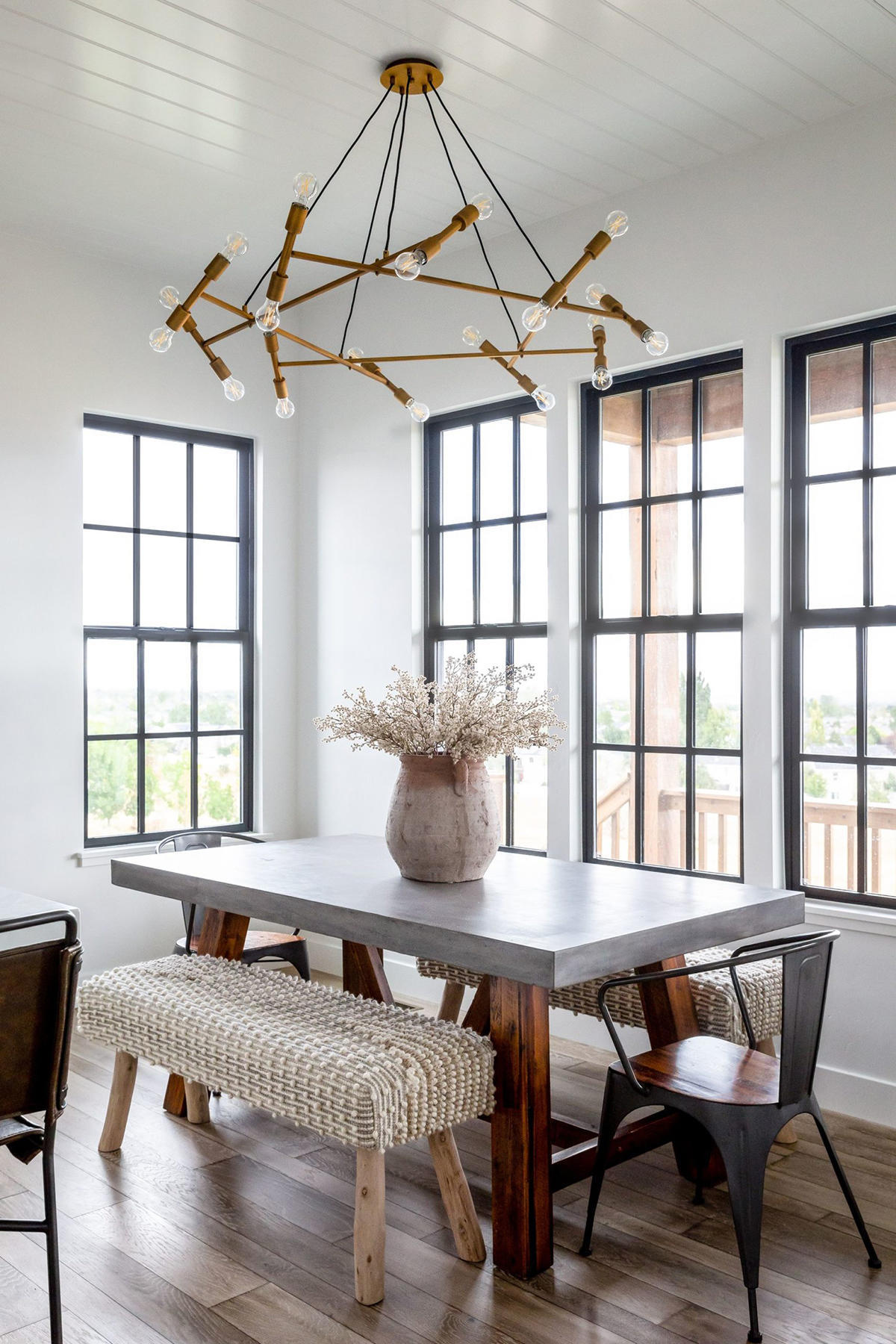
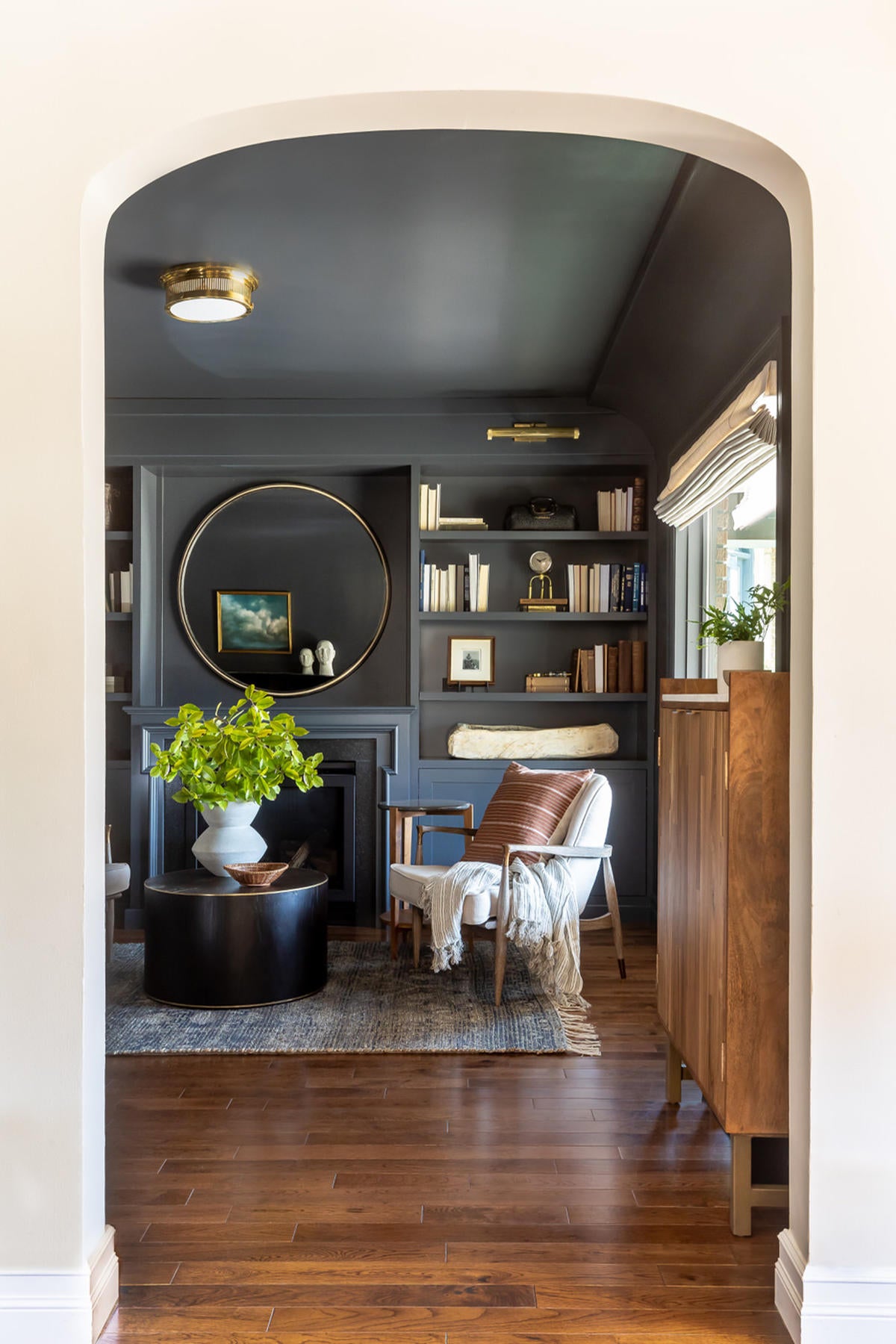
How did the e-commerce business drive growth on the interiors side?
When it was just Erin and me and a few employees, we didn’t take on as much work. We could’ve taken on more, but we would say no to a lot of projects. But once he came on, we were super motivated. He crunched numbers and was like, “OK, this is how many projects we need to take on, and this is how many hours you need to work.” Suddenly, we had a much clearer vision of what we needed to do.
That’s huge.
It is huge. The more you hire, the more money you have to make to pay for all the people that you’ve hired, and so it starts to become a lot more than just two people working from home for fun. It became a real, serious business, which is great and fun, but has also come with a lot of challenges as well.
Does it keep growing? What does the future look like in terms of team growth?
That is a question we’re still trying to figure out. I think that the most important thing to us is quality. We’re trying to make sure as we grow—and we’re growing super fast—that we are still delivering quality projects to our clients, that our e-design process is running smoothly, and that our e-commerce is as good as it can be. But I don’t think we envision a [certain number of people].
Your role has changed a lot, I imagine. What are the things that you don’t want to hand off?
I’m in charge of our social media. That’s been something that Erin and I have both felt like we still need to have our faces on a lot. Even though we’re growing, we still want to make sure that we’re at the forefront of the company.
Also, although we’re not as involved in the nitty-gritty of each new construction and remodel, we meet with all of our design teams once a week so that we still have a good pulse on each project. Nothing really gets past us that we don’t like. If a designer presents a kitchen plan and we’re not feeling the color scheme, we make them switch it up. We still want to be designers at the end of the day, but we also know we have limits, so we have to rely on our team quite a bit.
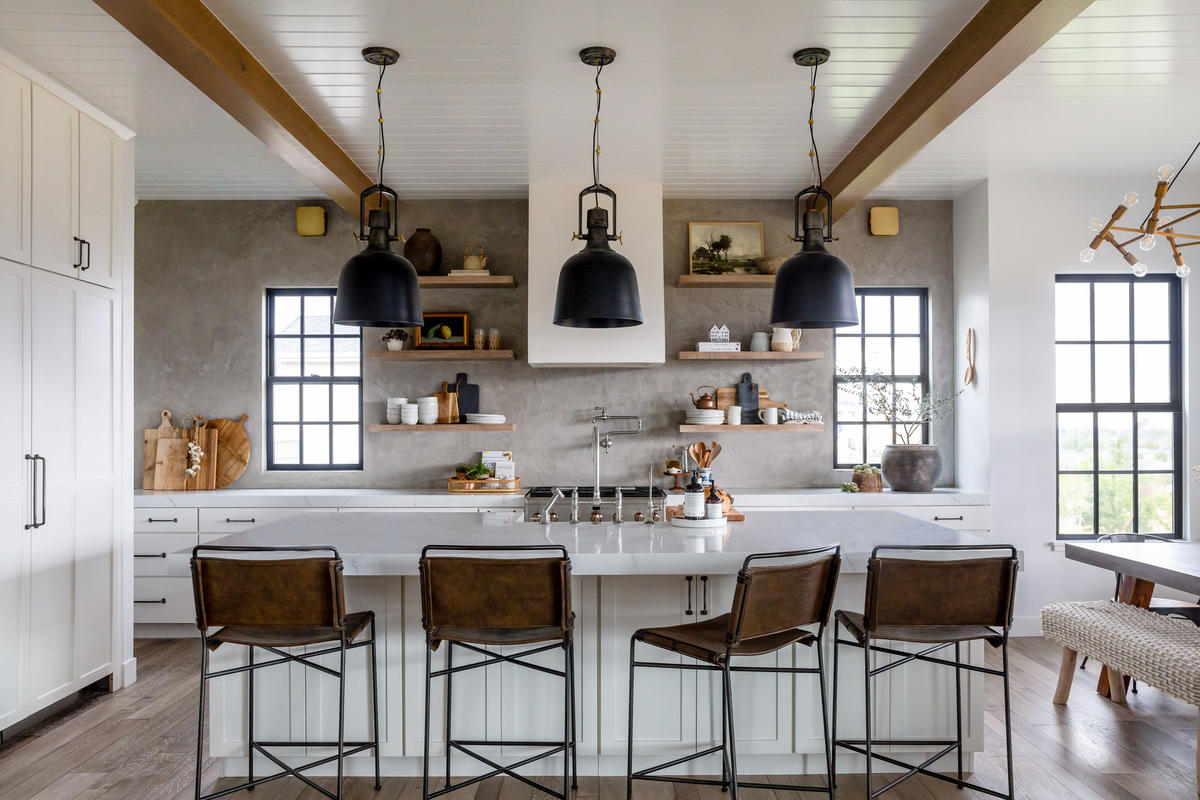
How much do clients see you or Erin?
Not a ton. One thing that’s been tricky is that we found if Erin and I show up too early in the process, the client loses a lot of confidence in their senior design team. They start to respect us more than them, and then we have to be a lot more involved, even though our design teams are amazing and fantastic. We always feel like they do a much better job than Erin and I could—they have a lot of experience, and they’re all creative, talented people.
How do you get around that?
We like to show up at installs. We like to be there at the end to make sure it all comes together [and] it’s styled correctly, and then meet the clients and let them know how grateful we are. But mostly it’s our design teams running the face-to-face interaction.
Do either of you do intake calls, or is that also someone on your team?
We used to do it, but now it’s our teams. It’s for the same reason: We’ve had a hard time with people feeling like they need to work with us. It’s almost like they’re [attached to] the first person [they meet]. Erin and I always call it imprinting—
Like ducklings!
Exactly. Clients are like, “Oh, you’re the one that I want to work with—exclusively.” And it gets to be really complicated. We don’t ever want to devalue our design teams in that way, because they are so good at what they do.
How do you collectively decide what you’re saying yes to?
Well, we have minimums now. Our full-service minimums are 100 hours of design time and a $50,000 budget for furniture. That helps weed out projects that aren’t a great fit—and because we have our e-design team, we actually can say yes to most everything.
Is there a minimum for e-design?
Nope.
How many projects is the firm typically working on at one time?
We have around 30 projects locally, and about five e-designs a week.
New builds can stretch years, but what’s the timeline on an e-design project?
From start to sending off the final design, it’s three to four weeks. Our e-designers are still very involved—there could still be a small bathroom remodel, or a full house of furniture, so even those projects can take a little bit longer.

What is the client experience for local projects, in terms of onboarding and getting to know them?
We start with a lead call. Then there’s usually an estimate review, where we review our design services and make sure clients feel really comfortable with it. And then once clients are signed on, the designer will set a time for a mood board presentation. That’s something Erin and I didn’t used to do, but we found a lot of value in it, because in the past we would design a whole space and present it, and they’d be like, “Well, this isn’t even our style,” or, “We don’t even like these colors.”
So now we do a mood board, which is essentially the feeling of your home—this bedroom will have a moody palette, and this bathroom will be very light and bright. Those pictures aren’t necessarily specific indicators of what you’re going to see—there might be a peaceful landscape with rolling hills, and it just evokes a mood. Once the client signs off on those, we feel comfortable moving into hard finishes, so that will be the next phase. We’ll do a hard finish presentation, and then a furniture presentation, and all the ordering and then install.
How has the way you shop or source changed over the years?
Originally, we were doing a lot of retail because that’s what we knew the most. We hadn’t been to any of the designer markets—it took us a few years to get there. We had design accounts, but we weren’t as comfortable or familiar with those products.
What changed that?
We had a project where I sourced a lot of Pottery Barn for the client’s house—I don’t remember exactly where everything was from, but I do remember she was upset. She was like, “I can buy all of this stuff. I don’t want what my neighbors have—I want something that looks like it’s been designed by a design firm.” It was eye-opening for us. So now we try to really do a lot of trade products as much as possible.
Our e-commerce shop, House of Jade Home, has helped a lot with that. It has been a huge asset for our e-design team, too, because we want our e-design clients to feel like they have the same offerings as our local clients. We don’t want to just say, “Well, because we’re sending you a shopping list, it’s all going to be from retail places that anyone can shop from.” We like to have a lot of things that are unique to designers and the trade—things that people haven’t seen yet. That’s super important to us. That’s like the main thing that’s changed—we’ve really tried to distance ourselves from retail as much as we can.
Were trade brands initially kind of leery of being sold online?
I mean, they’re all so different. Some people embrace it with open arms, and then some people are like, “Heck no, we’re not even going to talk to you about it.” I definitely think it’s becoming much more commonplace. There are several designer e-commerce stores, and new ones are popping up all the time. So I think they’re pretty familiar with it now. Some of them love it, and some feel like it taints their brand. One thing that’s nice is that once we sell enough of their product, as designers, they feel comfortable that we are going to be able to promote them well, that we know their brand and their products well enough. That takes time, [building] those relationships and gaining their trust. But it’s going well, and we have some great brands that are really excited about our shop and working with us.
Do you place these orders the same way you would for a design project, in terms of managing shipping and fulfillment?
We have a separate team of people that do the ordering for all of that. It’s a little bit of a different process, because there are a lot of drop ships. When we buy locally [for our projects], it’s all going to the same place, and we’re super comfortable and familiar with that process. But when we drop-ship to clients, there are always little hiccups that we’re not used to—because we haven’t shipped to that state, for example.
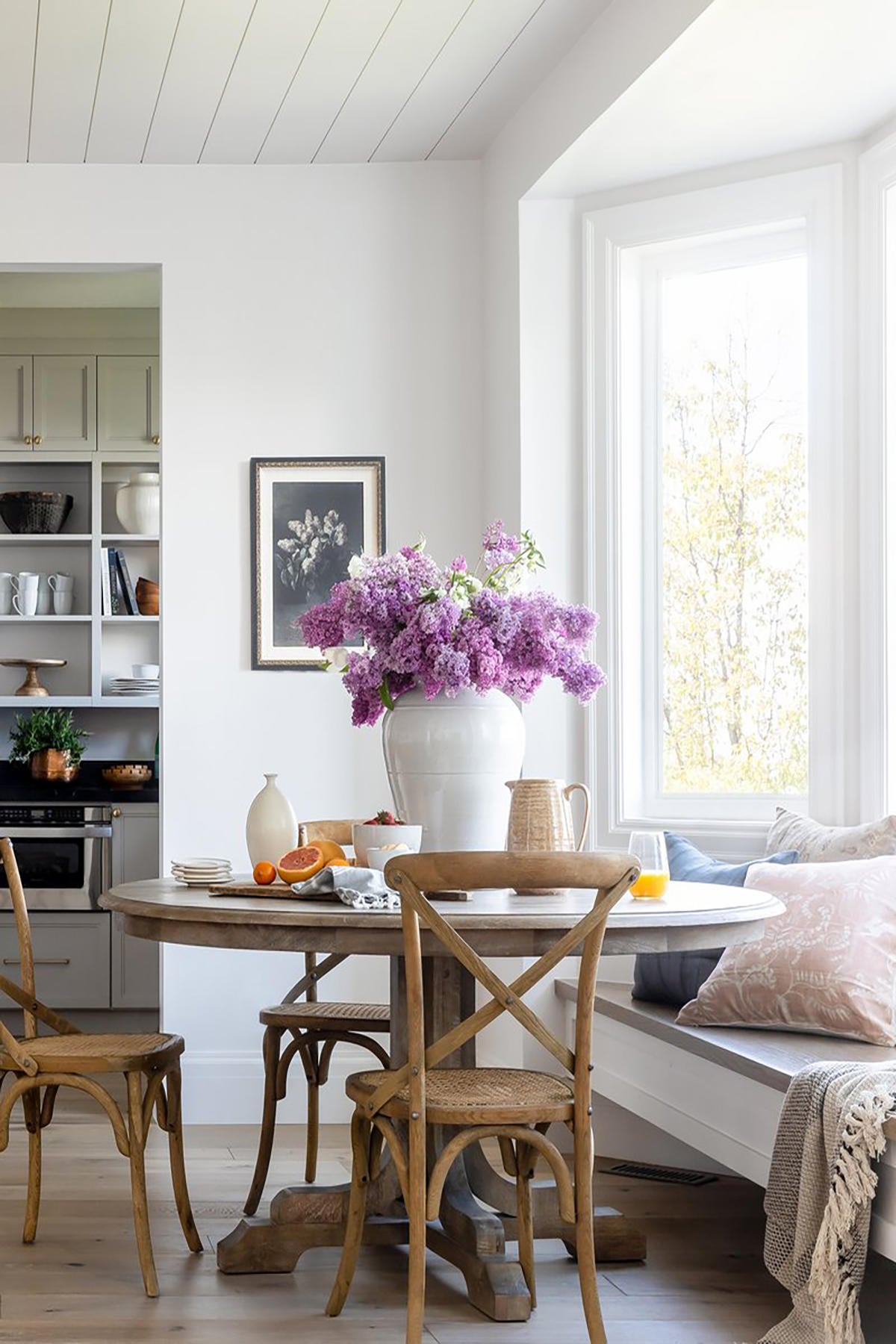
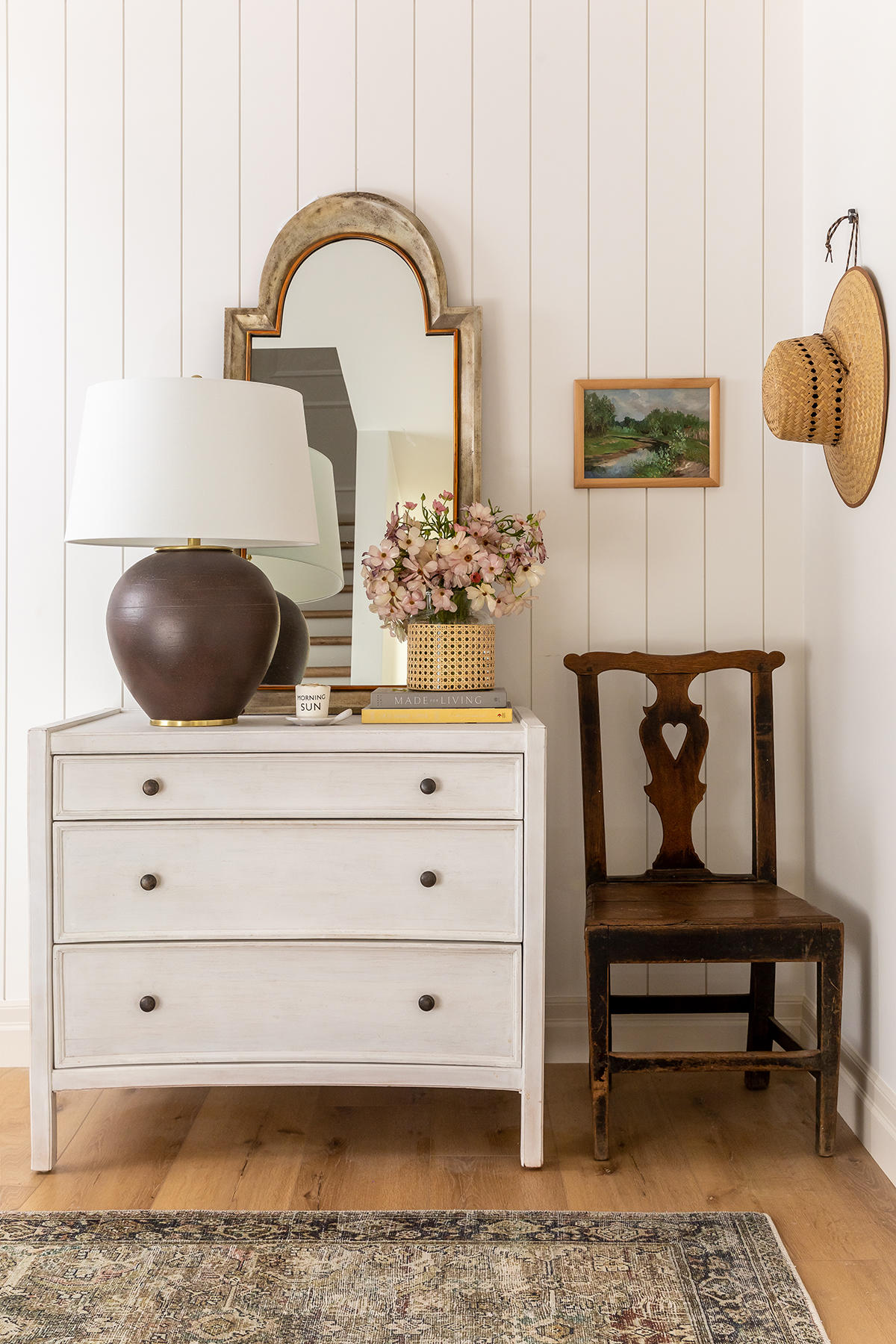
Can you tell me about the design scene in Utah right now?
I think this has been kind of a national phenomenon with COVID, but it is crazy here. We just weren’t sure when we went into COVID what that would mean for us. We were like, It could go one of two ways—and it has boomed. Everyone was home constantly. We had a lot of people shifting to working from home. There were a lot of men who [previously] weren’t home a lot and were now home all the time. And they were like, “Well, let’s spend some money on the house.” So we were looking at a lot of remodels and new construction. There were also people who were like, “Wow, we could sell our house now for a lot of money and build something else.”
So, we’ve been really busy. The housing market has been crazy here. It’s actually hard for people to find homes. People interested in remodeling are like, “Well, I could refinance; my house is worth a lot more,” and they’re putting a lot of money into this home and staying longer than maybe they thought they would.
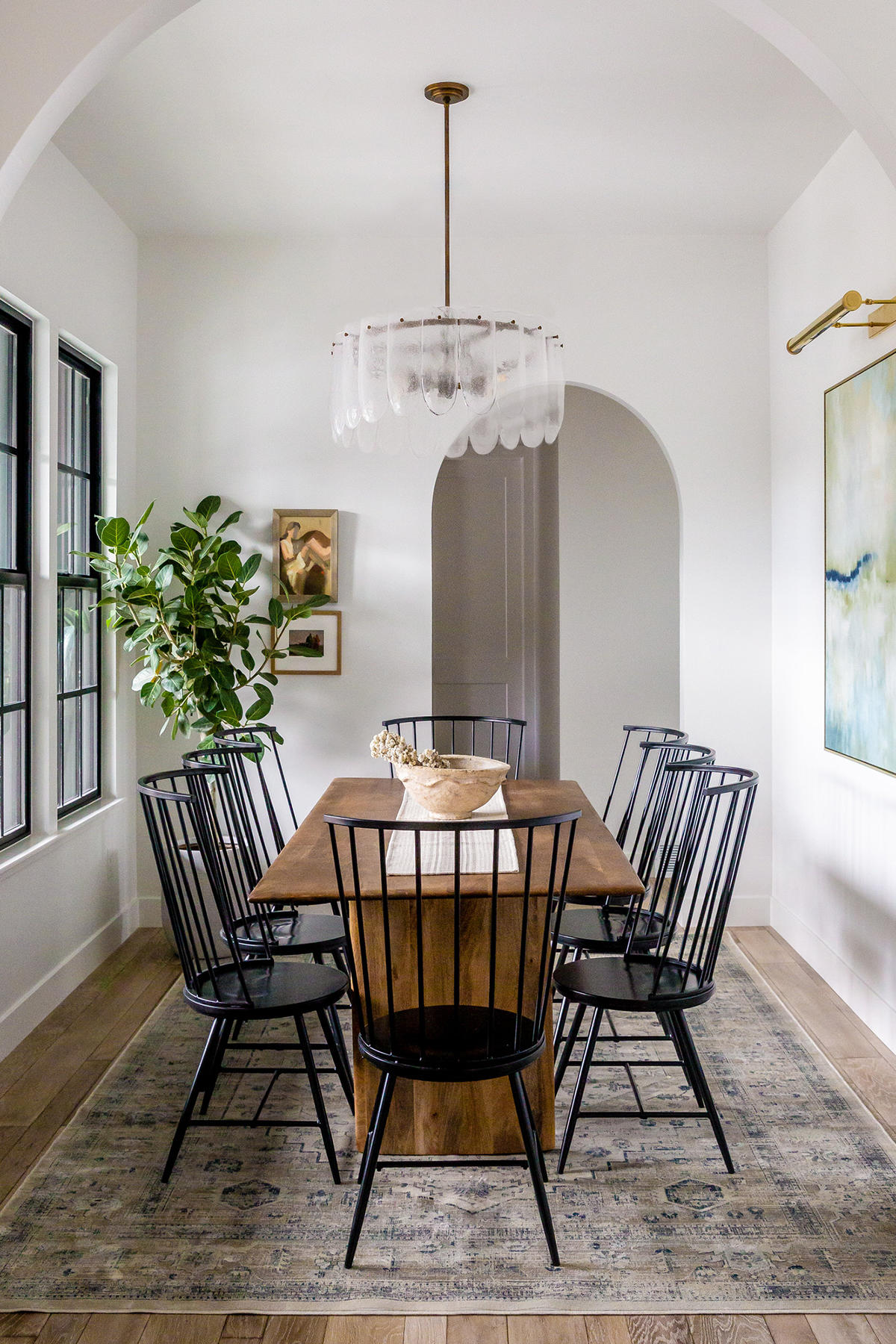
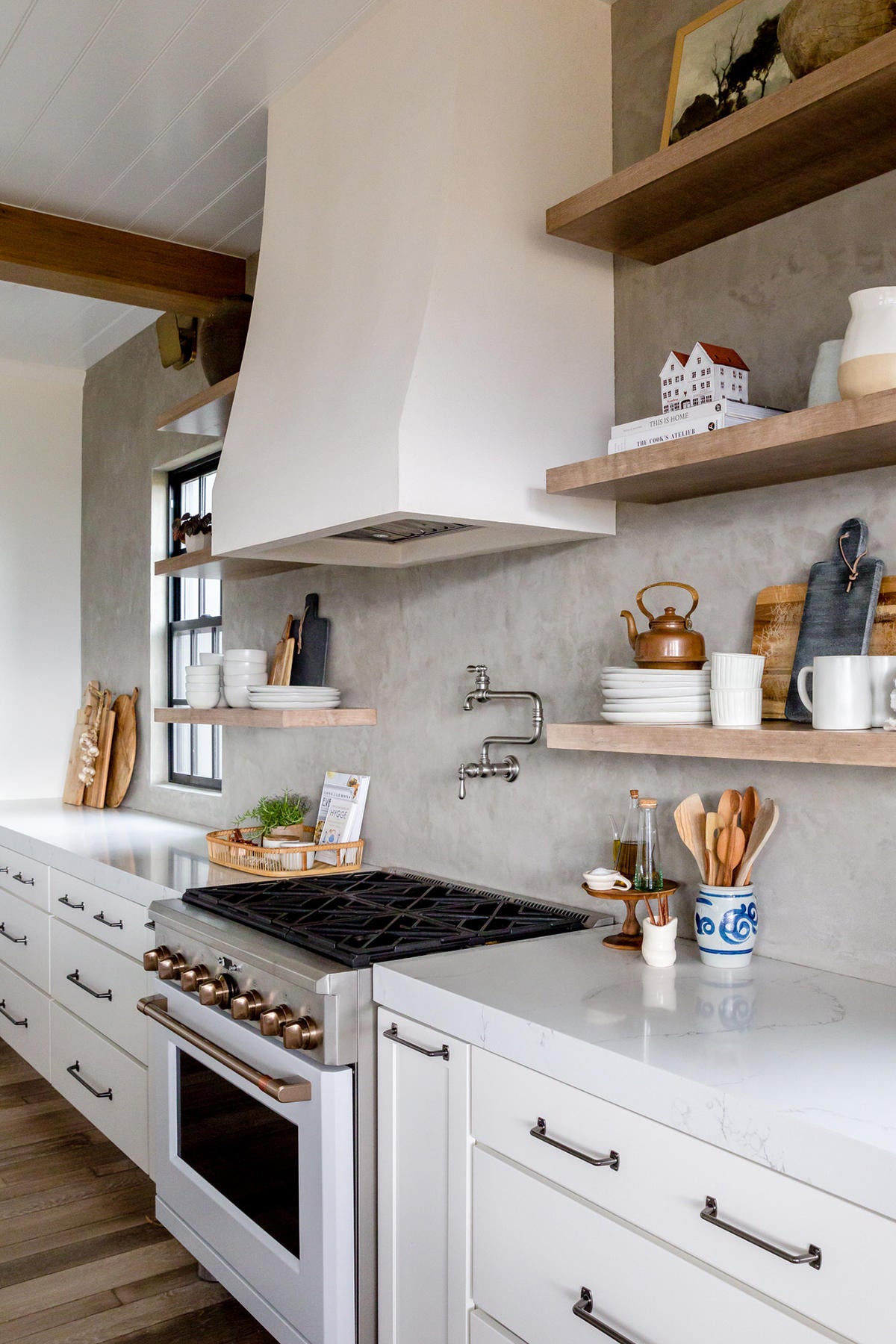
Going back to hiring for a second: So many people have been telling me that it’s really tough to find employees right now. How do you attract and keep talent?
That’s one of those things we’re still trying to figure out. You’re right—it has been really hard to hire, and it did not used to be like that. We have a lot of big design firms in Utah, so talent gets sucked up really quickly.
One thing we offer is a lot of autonomy. At the beginning, we were all working from home. We have a lot of people with kids who want to work part-time. We wanted to make sure we were very respectful of that, because that’s how Erin and I started too. We totally understand the struggle of working from home. We wanted to make sure we were very flexible with people and their schedules and lives. So we try to be very respectful of our employees and their needs and wants. We have goals we want them to meet, but we’re very open to what works best for their lives.
We also just try to be nice people. We’re always grateful because we are still a newer business. This growth has been new, in the past couple years. So there are a lot of things we’re still working out, and we’re not perfect at. By no means do we ever pretend we’ve got it all figured out. We are definitely open to [our employees’] opinions and thoughts. And like I said, we meet with them once a week just to make sure that they’re feeling OK and that everything’s good.
We try really hard to be good listeners and make sure that they like their job. But at the end of the day, we don’t have full control over them or what they want or need. And we just hope that they stick around as long as we can have them.
Are you all back in the office now?
Our office is open, everyone has a key, and they can come in when they want, but we don’t have set office hours. We have one team right now that’s mostly working from home, but that’s because we’re transitioning to a new office in the next few months after outgrowing our current space because we were bursting at the seams. Once we get into the new office, I think everyone will be there when they feel like it. Because designers are on-site a lot, it doesn’t make sense to have people in an office nine-to-five anyway. They’re on job sites or at tile showrooms or shopping for an install, and just doing what they need to do.
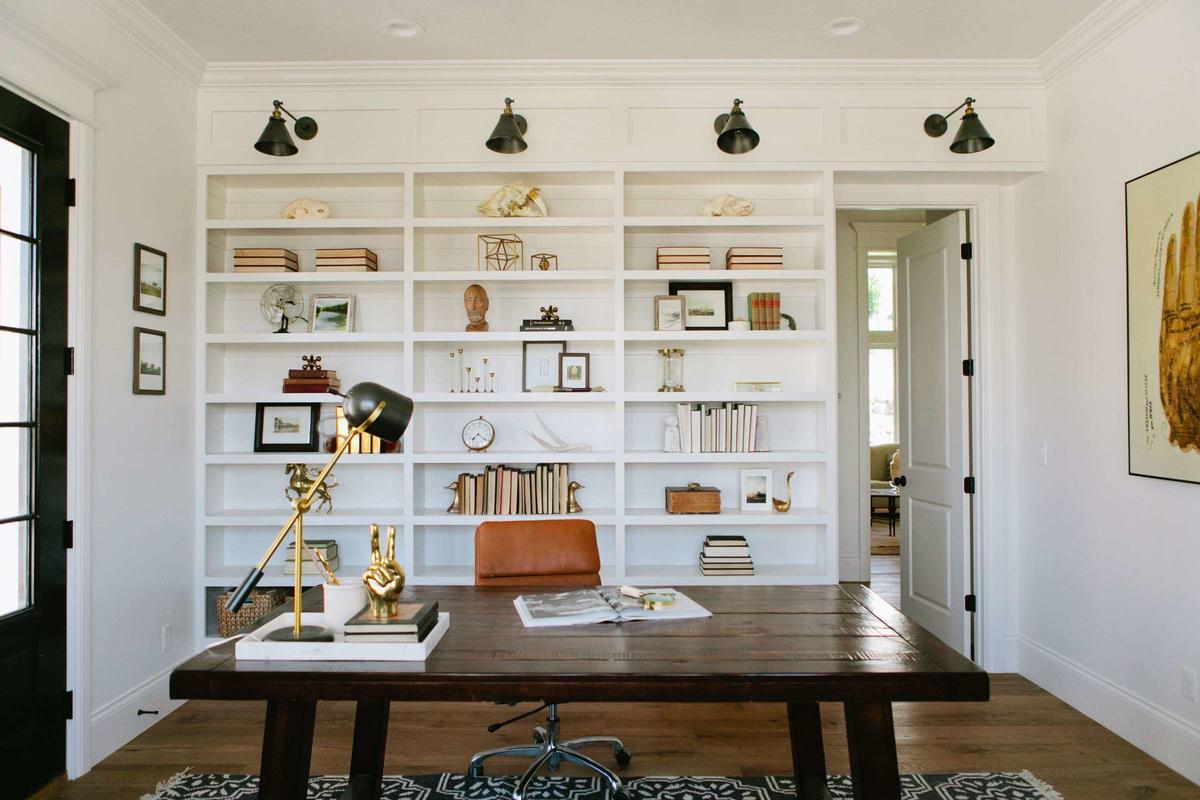
As you’ve grown, have you changed the way you bill?
Yeah, I think that is pretty natural. When I started out I was billing $40 an hour. So that’s definitely risen, but the value is so much more than I was offering in the beginning. I really feel comfortable with what we charge now because of that. We have a lot of overhead that we didn’t have before, but all of that adds to the client experience and makes it so much more professional. So we feel super comfortable in that.
Our biggest thing right now is trying to be as efficient as possible. As a designer, you could spend 10 hours sourcing one dining table, but you don’t need to. We try to be really careful and always talk to our staff about being as efficient as possible with our clients’ time and money, making sure we’re very respectful of their budgets. It’s something we’re definitely still working on, but it is very, very crucial to the process.
What is one thing you wish you knew when you started?
There’s way more than one thing, but I wish I’d known the value of people. When you’re just starting out, you think you can do it all on your own, and that you can’t afford to hire help or that it’s not in the cards for you. When I was doing business from home, when my son was napping for a few hours a day, I thought that was it. That was the capacity. Then, when you start to realize there are so many other people out there who are willing and wanting to be in this field and that are super talented, they add so much to your business. It becomes so much more than you ever thought it could. But you have to really look at people and see what they can do, and value who they are. To see where I started [relative] to where we are now, it all has to do with the people that we’ve brought on. That really is the sweet sauce of everything—the people.
What does success look like to you?
Success, to me, means making the world more beautiful in a way that makes people happy. That’s always why I did it. I want to create a home for someone that they love, but also where the process was really good, so that when they’re in their home, they’re not reminded of this challenging process they went through to get to that point. I want it to be as good as possible.
To learn more about House of Jade, visit the firm’s website or find them on Instagram.
Homepage photo: Erin Morgan and Kirsten Krason | Courtesy of House of Jade Interiors
















